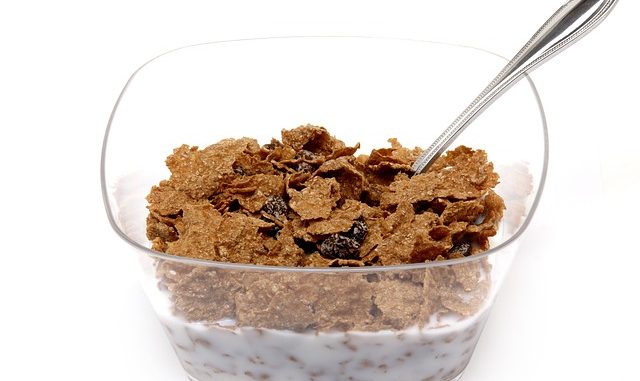
Ferulic acid (FA) is a natural plant compound – a hydroxycinnamic acid which is found in plant cell walls of seeds and leaves. It is often bound to structural components as a side chain to molecules such as hemicelluloses, cell wall polysaccharides, glycoproteins, polyamines, lignin, hydroxy fatty acids and arabinoxylans. The linkage is an ester type which ensures a relatively stable covalent conjugation to a variety of structures. It also occurs in its free form in tomatoes for example.
The IUPAC name is (E)-3-(4-hydroxy-3-methoxy-phenyl) prop-2-enoic acid.
The name is derived from the genus Ferula which refers to the Giant Fennel (Ferula communis).
Sources Of Ferulic Acid
Ferulic acid is sourced from wheat bran which is the hard, insoluble fibrous layer. Other sources include bamboo shoots (243mg ferulic acid per 100g dry weight), red beet (25mg ferulic acid per 100g dry weight), sugar-beet pulp (800mg ferulic acid per 100g dry weight) and popcorn.
Antioxidant Potential
Ferulic acid has potent antioxidant potential because it contains a phenolic nucleus with an extended side chain conjugation. It readily absorbs UV light which catalyses the formation of a stable phenoxy radical that then terminates free radical chain reactions (Graf, 1992).
Function In Plants
The antioxidant potential of this compound means it scavenges free radicals which damage other componentry. It also reduces and suppresses radiation-induced oxidative reactions. That ability has not been lost on cosmetics producers who incorporate the compound into skin creams and anti-aging products.
In the plant, it probably helps to maintain the general physiological integrity of cells. It also has a vital role in providing rigidity to the cell wall through its numerous chemical interactions. (Kumar & Pruthi, 2014). These same authors in their abstract describe a multitude of biological activities for the compound:-
“antioxidant, anti-inflammatory, antimicrobial, antiallergic, hepatoprotective, anticarcinogenic, antithrombotic, increase sperm viability, antiviral and vasodilatory actions, metal chelation, modulation of enzyme activity, activation of transcriptional factors, gene expression and signal transduction”.
It is a precursor for the manufacture of a number of compounds especially the aromatic types. These include key compounds such as coniferyl alcohol, vanillin, sinapic acid, diferulic acid and curcumin. When the ferulic acid is naturally derived, it can be claimed that manufacture of the corresponding compounds is from natural sources and is an important consideration in manufacturing.
In food, it may reduce the impact of lipid peroxidation and reduce rancidity.
Metabolism
It is a major metabolite of chlorogenic acids in humans where it is absorbed in the small intestine. However, in food it has a low bioavailability which restricts its use as a clinical compound (Mancuso and Santangelo, 2014).
Phenolic compounds are often bound to ferulic acid which is claimed to help increase their resistance to fungal diseases.
Clinical Activity
In clinical terms, it could be a proposed treatment for a range of conditions including Alzheimer’s disease, cardiovascular diseases, diabetes, skin diseases and even cancer (Mancuso and Santangelo, 2014; Ghosh et al., 2017).
Countering Depression
A mouse model showed that feeding ferulic acid to these rodents reduced their level of depression when it was induced. Findings were based on forced swimming tests and tail suspension tests. Depression is an inflammatory associated mental disease. The compound appeared to act as an antidepressant by reducing the activation of microglia and suppressing NF-κB signaling. It also reduced the production of pro-inflammatory cytokines. It indicates further research needs to be conducted in humans to understand if the same mechanisms exist.
References
Ghosh, S., Basak, P., Dutta, S., Chowdhury, S., Sil, P.C. (2017) New insights into the ameliorative effects of ferulic acid in pathophysiological conditions. Food and Chemical Toxicology. 103 pp. 41-55 (Article)
Graf, E. (1992) Antioxidant potential of ferulic acid. Free Radical Biology And Medicine. 13 (4) pp. 435-448 (Article)
Kumar, N., Pruthi, V. (2014) Potential applications of ferulic acid from natural sources. Biotechnol. Reports. 4 pp. 86-93 (Article)
Liu, Y.-M., Shen, J.-D., Xu, L.-P., Li, H.-B., Li, Y.-C., Yi, L.-T. (2017) Ferulic acid inhibits neuro-inflammation in mice exposed to chronic unpredictable mild stress. Int. Immunopharmacology. 45 pp. 128-134 (Article)
Mancuso, C. & Santangelo, R. (2014) Ferulic acid: Pharmacological and toxicological aspects. Food and Chemical Toxicology. 65 pp. 185-195 https://doi.org/10.1016/j.fct.2013.12.024
Mota, F. L., Queimada, A. J., Pinho, S. P., Macedo, E. A. (August 2008). Aqueous Solubility of Some Natural Phenolic Compounds”. Industrial & Engineering Chemistry Research. 47 (15): 5182 5189. doi:10.1021/ie071452o
Actually an important component in our food. Would like to get more information about this ingredient if that is what you might call it. Looks important from the point of view of keeping the brain healthy.
I remember working on this compound many years ago when I was doing research on apple processing.